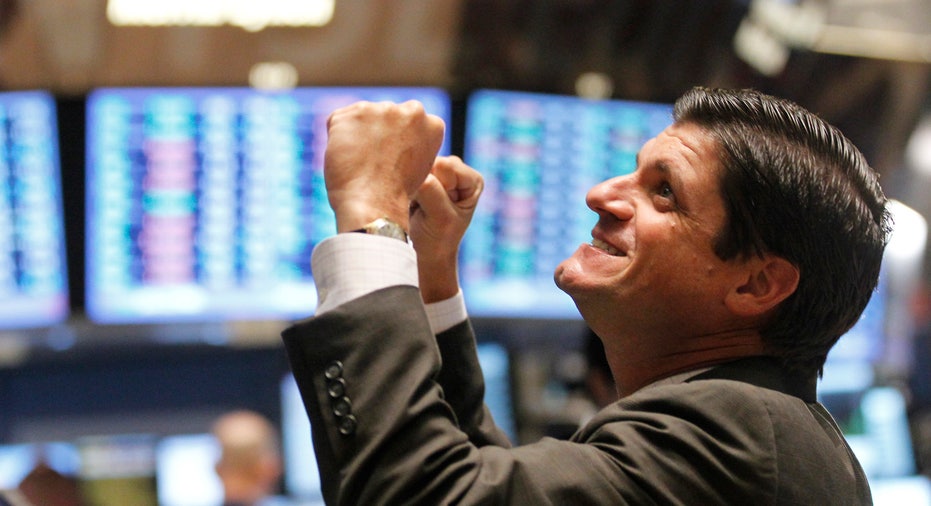Is Wall Street on the Cusp of the Next Great Rally?

With Europe still teetering, the race for Congress and the White House up in the air and the fiscal cliff looming, now would hardly seem to be the time to call for U.S. stocks to rip dramatically higher.
However, that’s exactly what technical analysts at Piper Jaffray predicted last week, slapping an extremely bullish 24-month price target of 2000 on the S&P 500, which would translate to a 42% surge from current levels.
“We believe the next great equity rally is starting to unfold,” Craig Johnson, senior technical analyst at Piper Jaffray, wrote in a note.
To support this hopeful forecast, Johnson pointed to parallels between present conditions and the end of the secular bear markets of the 1970s and early 1980s, tumbling U.S. Treasury yields and Wall Street’s recent ability to rally in the face of negative news like the eurozone crisis.
“When negative news cannot take the stock market down, we all need to pay attention,” said Johnson, who also set six- and 12-month targets of 1550 and 1700 on the S&P 500.
U.S. stocks have managed to persevere through much of this year, with the S&P 500 generating a 12% return as of Wednesday and trading less than 10% away from its all-time highs set in October 2007.
Still, a two-year run to 2000 would be a dramatic acceleration of recent gains, leaving the Dow Jones Industrial Average on the verge of 19000 after plunging below 7000 during the Great Recession.
Parallels to 1970s
To make his argument, Johnson points to the history books.
“While many investors believe today’s market is ‘different this time’ or that we are in ‘unprecedented times,’ we don’t share that belief; instead, we see many similarities with the latter stages of the 1970s secular bear market,” he said.
Johnson said the 1973-1974 bear market was followed by a period of “investor healing” that was marked by sluggish trading volume and “high levels of investor apathy,” similar to today’s market environment.
Also, Johnson said a secular change in bond yields corresponded with the next leg of the bull market, leading to a shift in assets toward equities from fixed income.
In recent months the yield on the 10-year Treasury note plummeted to a record low of 1.38% before bouncing above 1.60% in August.
Cautious Sentiment Persists
Johnson also pointed to market sentiment, which has remained cautious despite the S&P 500 soaring 150 points since the June 2012 lows.
After all, he noted, billionaire investor Warren Buffett once declared: “One should be greedy when people are fearful and fearful when people are greedy.”
Luke Aucoin, chief operating officer and portfolio manager at Vista Research and Management, said he believes the Piper Jaffray long-term targets may be “a bit too optimistic,” but conceded “the thesis that we are at the beginning of a new bull [market] makes sense.”
Besides expectations of political and fiscal certainty after the election, Aucoin cited an apparent recovery in the U.S. housing market and “the fact that the retail investor continues to shun stocks.”
According to the Investment Company Institute, global investors have withdrawn $21.84 billion from long-term equity mutual funds since the week ended July 25, including $5.89 billion last week alone.
Too Many Obstacles for 3.5% GDP?
Still, for the bullish Piper Jaffray prediction to come true, something dramatic would have to change on the economic outlook, likely triggered by a vastly improved political environment.
“The premise for that kind of a call would have to start with the economy getting back on track for 3% or 3.5% GDP growth,” said Marc Pado, U.S. market strategist at investment advisory DowBull.
If GDP surged from 1.7% in the second quarter above 3% next year, it could push trailing earnings for S&P 500 companies above $120 per share, Pado said. Based on a historically bullish price-to-earnings ratio of 18, that could theoretically push the S&P 500 to 2160.
“The question is: can you get GDP growth of 3% or 3.5%?” said Pado. “I think it’s optimistic, especially because of Europe. You tell me who thinks Europe is going to go away [as a problem] by the end of 2013 and then I’ll believe you’ve got a shot at much higher numbers.”
Pado firmly believes the corporate structure for stronger earnings is already present; companies have mountains of cash on their balance sheets, vastly leaner operations and diminished debt loads.
However, the eurozone debt mess and political stalemate in Washington continue to cloud the economic picture.
Johnson concedes there are a slew of risks to his bullish call, highlighted by Europe and a potential failure to prevent the $1.2 trillion in across-the-board spending cuts if the U.S. falls over the fiscal cliff.
A more realistic outcome, Pado said, would be for P/E ratios to rise to the historical average of 15.7 on trailing S&P 500 earnings of $110 per share, translating to the benchmark index rising to 1725 by the end of 2014.



















